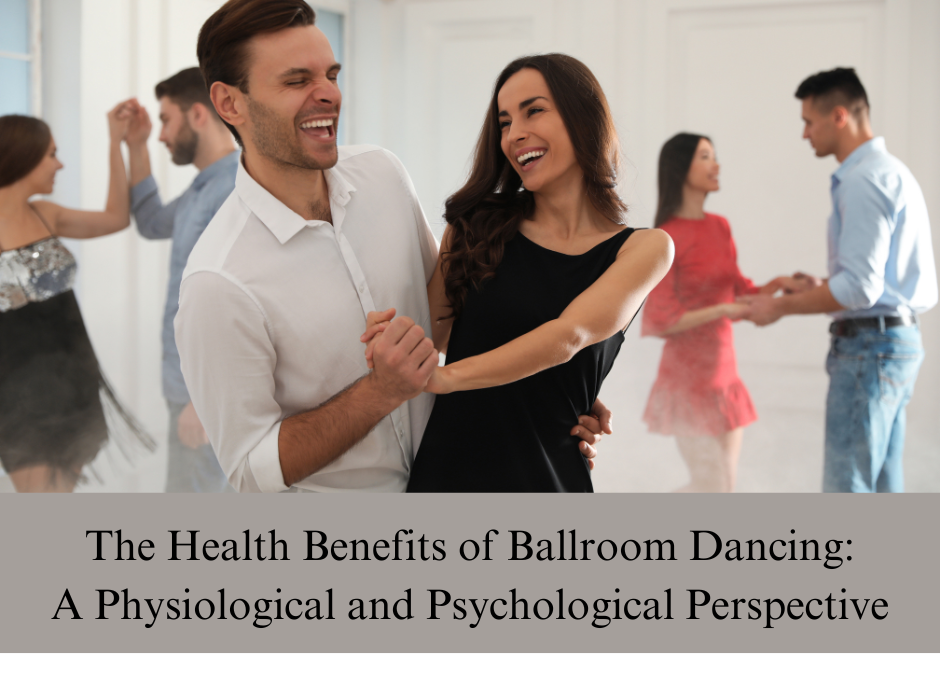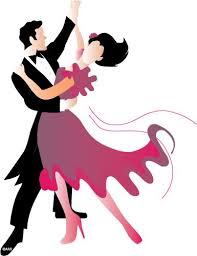
Next Monthly Dance
SOCIAL DANCING & LESSONS
For Group and Private Lessons information, please go to the About tab and select Local Information.
Articles & Other Dance News

The Health Benefits of Ballroom Dancing: A Physiological and Psychological Perspective
Introduction:
In a world where fitness trends come and go, one timeless activity continues to stand out not only for its grace and elegance but also for its numerous health benefits—ballroom dancing. Beyond the dazzling moves and glamorous attire, ballroom dance offers a unique combination of physiological and psychological advantages that contribute to overall well-being. Let’s explore the dance floor and discover how waltzing and cha-cha-ing can positively impact your mind and body.
Physiological Benefits:
- Cardiovascular Health: Ballroom dancing is more than just a series of steps; it’s a cardiovascular workout in disguise. Whether gliding through a waltz or quickstepping to a jive, your heart rate increases, promoting better circulation and cardiovascular health. Regular dancing can contribute to improved stamina and a healthier heart.
- Muscle Tone and Endurance: Engaging in ballroom dance involves a variety of movements that target different muscle groups. From the core-strengthening steps of the tango to the legwork in the salsa, dancers develop increased muscle tone and endurance. This full-body workout not only enhances physical appearance but also supports functional strength in everyday activities.
- Balance and Coordination: The intricate footwork and precise movements required in ballroom dancing promote enhanced balance and coordination. These skills are crucial for preventing falls, especially as we age. Dancing challenges the body to maintain stability, improving balance and overall spatial awareness.
Psychological Benefits:
- Stress Reduction: The rhythmic patterns and expressive nature of ballroom dance create a perfect escape from the stresses of daily life. As you immerse yourself in the music and movement, stress hormones decrease, and the release of endorphins—the body’s natural mood lifters—increases. This mental reset can lead to improved emotional well-being.
- Social Connection: Ballroom dancing is inherently social, fostering connections with others who share a passion for movement and music. Social interactions during dance classes or events provide a sense of community and belonging, reducing feelings of isolation and loneliness.
- Cognitive Benefits: Learning and mastering dance routines require mental focus and memory recall. Engaging in ballroom dance regularly can help sharpen cognitive functions, enhance memory, and improve overall mental acuity. It’s a fun and engaging way to keep the mind active and agile.
Conclusion:
Beyond the glitz and glamour, ballroom dancing emerges as a holistic activity that contributes significantly to both physical and mental well-being. Whether you’re a seasoned dancer or a beginner taking your first steps, the health benefits of ballroom dancing make it a delightful and fulfilling pursuit. So, put on your dancing shoes, feel the rhythm, and dance your way to a healthier, happier you.

Risk Liability Disclaimer:
By entering into or attending any USA Dance Events, (monthly dances, weekly lessons, workshops, Showcase performances, competitions, etc) it is understood, and you acknowledge that there are risks associated with dance and this event, which include by not limited to personal injury, risk of loss, or damage to property. USA Dance 6010; the Tallahassee Senior Center cannot be held liable for personal injury, risk of loss or damage to personal or stolen property, this includes risks associated with dance and this event, which include by not limited to personal injury, risk of loss, or to COVID-19, sustained by persons attending the event but not limited to, Board of Directors, volunteers, employees, vendors, sponsors or any other person acting on behalf of USA Dance, Inc, USA Dance 6010; and the Tallahassee Senior Center.
Participates voluntarily enters any event (competition, Dance Camp/Workshops; Showcase Performances and/or Social Dances, etc) assumes all these risks. Participates hereby swears that to the best of their knowledge they are physically and mentally to participate in this event.
The Tallahassee Senior Center is a non-smoking establishment.
USA Dance is not responsible for loss or theft of articles left in hotels, changing rooms, ballrooms, parking lot or other event facilities.
The ballroom is cool (when not dancing); please dress appropriately as no outer-wear jackets or coats and no large bags or backpacks are permitted in ballroom.
Persons not conforming to acceptable standards of behavior may, at the sole discretion of the chapter or event organizer, be asked to leave the event venue premises.


